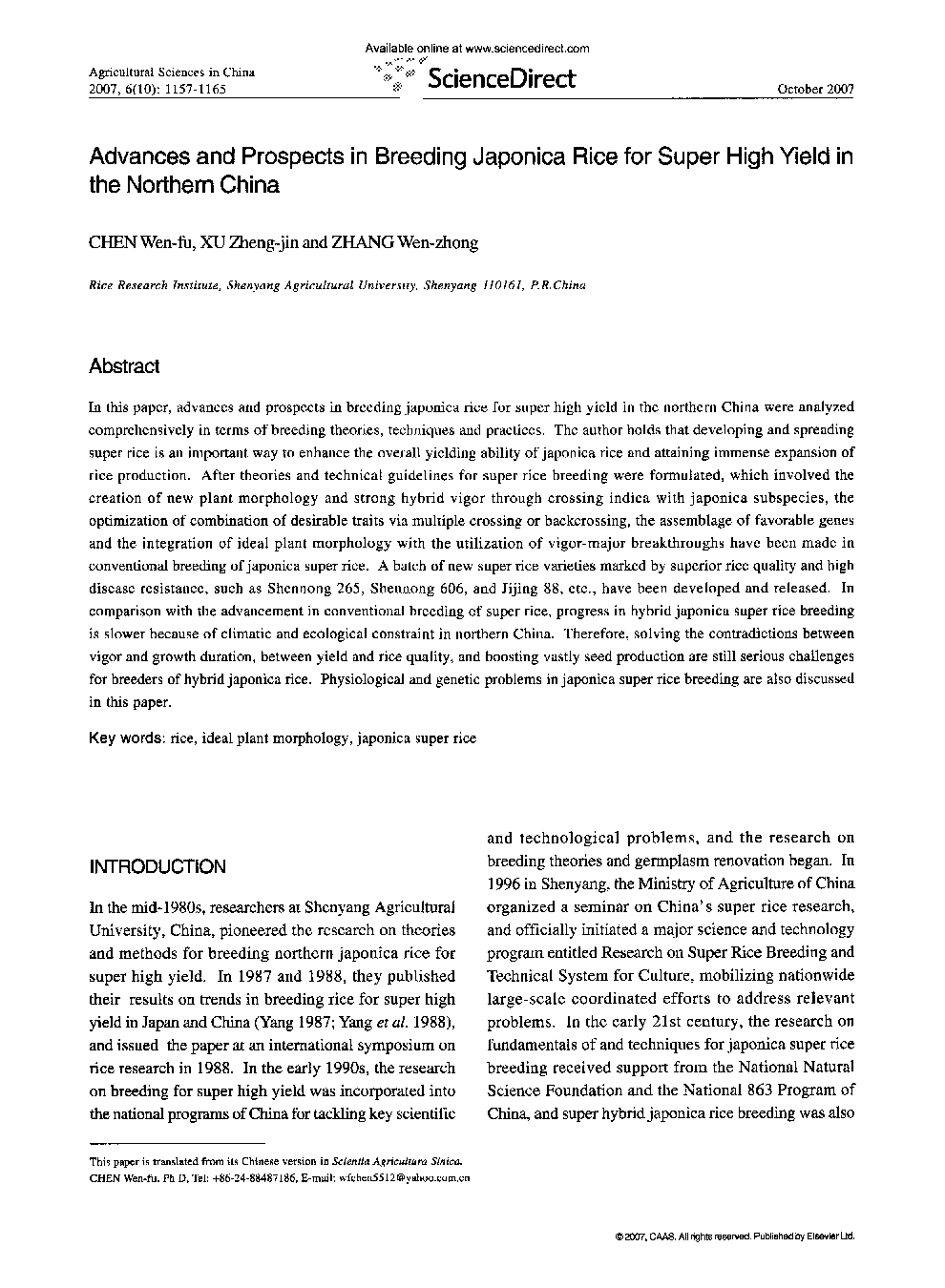| Article ID | Journal | Published Year | Pages | File Type |
|---|---|---|---|---|
| 4490736 | Agricultural Sciences in China | 2007 | 9 Pages |
In this paper, advances and prospects in breeding japonica rice for super high yield in the northern China were analyzed comprehensively in terms of breeding theories, techniques and practices. The author holds that developing and spreading super rice is an important way to enhance the overall yielding ability of japonica rice and attaining immense expansion of rice production. After theories and technical guidelines for super rice breeding were formulated, which involved the creation of new plant morphology and strong hybrid vigor through crossing indica with japonica subspecies, the optimization of combination of desirable traits via multiple crossing or backcrossing, the assemblage of favorable genes and the integration of ideal plant morphology with the utilization of vigor-major breakthroughs have been made in conventional breeding of japonica super rice. A batch of new super rice varieties marked by superior rice quality and high disease resistance, such as Shennong 265, Shennong 606, and Jijing 88, etc., have been developed and released. In comparison with the advancement in conventional breeding of super rice, progress in hybrid japonica super rice breeding is slower because of climatic and ecological constraint in northern China. Therefore, solving the contradictions between vigor and growth duration, between yield and rice quality, and boosting vastly seed production are still serious challenges for breeders of hybrid japonica rice. Physiological and genetic problems in japonica super rice breeding are also discussed in this paper.
